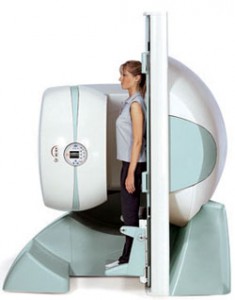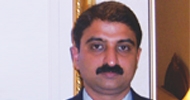
 By Dr Harsh Mahajan, Director, Mahajan Imaging Centre
By Dr Harsh Mahajan, Director, Mahajan Imaging Centre
Various state governments are looking at outsourcing MRI services in their district hospitals to private players which is enabling high-quality low cost scanning for patients visiting government hospitals, without any investment whatsoever from the government

The growth of MRI as a diagnostic modality in India was limited initially by two factors. First, the inherent high cost of setting up a new system, ranging anywhere from ` 3-10 crores, which in turn ends up as higher cost for the patient. And secondly, there was tremendous lack of knowledge about the clinical applications of this new technology amongst doctors at large. The staggering growth in this modality is evidence of the fact that both patient and clinician acceptance of this modality has increased many fold, to the extent that it is readily recognised that MRI actually improves clinical outcome for patients. The percolation of the modality to tier two and three cities has also driven this growth and having to travel many miles for an MRI scan, for routine applications, has become a thing of the past.
There are three main equipment vendors as far as high-field superconducting MRI systems are concerned, General Electric (GE), Philips and Siemens, and all three have almost equal market share. There is always a debate about the significance of the field-strength of the magnet, there is almost no significant and clinically relevant difference between a 1.5 Tesla MRI scanner and a 3 Tesla MRI scanner except in limited areas of application. This debate is also being laid to rest by companies, such as Esaote from Italy, which are developing dedicated MRI systems which, although having low field strength (0.25 and 0.3 Tesla), have image quality comparable to conventional 1.5 and 3 Tesla MRI systems. Their latest introduction in India, the O-Scan, a very small MRI system dedicated for scanning of the wrist, elbow, knee and ankle, makes it possible to have an MRI scan done while literally sipping a cup of coffee and reading the newspaper. In the high-field MRI segment, all three companies have recently come out with products that finally harness the capability of 3 Tesla magnets and provide significant advantages over the existing 1.5 and 3 Tesla scanners.
MRI guided therapy using focused ultrasound (HIFU) is another new introduction in India that enables clinicians to treat disease without any cutting, scarring, pain or hospitalisation for fibroids in women. There are also significant advancements in the fields of kinematic imaging, dynamic imaging, perfusion imaging and non-contrast angiography imaging by MRI. Weight bearing imaging using an MRI scanner that can scan the patient in the standing position is opening new dimensions in spinal disease imaging and treatment.

The future of MR Imaging lies in high-field MR systems but equally in low field systems which are patient friendly and targeted to specific body parts and diseases. Public-Private-Partnership may also play a huge role in providing accessibility to patients residing in remote parts of the country. There is a constant increase in the number of hospitals, day centres and private clinics all over India and to cater to this growing need there will be immense demand for diagnostics in the country.//
| In the year 1989 a panel of senior radiologists discussed the requirement of MRI in India. It was postulated that India requires only permanent magnet low field MRI systems, and that a total of 12 MRI scanners would be adequate for the entire country. Today, 23 years later, India has a total MRI installedbase of about 1200 scanners, out of which 600-700 are high-field super conducting MRI systems |
Be a part of Elets Collaborative Initiatives. Join Us for Upcoming Events and explore business opportunities. Like us on Facebook , connect with us on LinkedIn and follow us on Twitter , Instagram.











